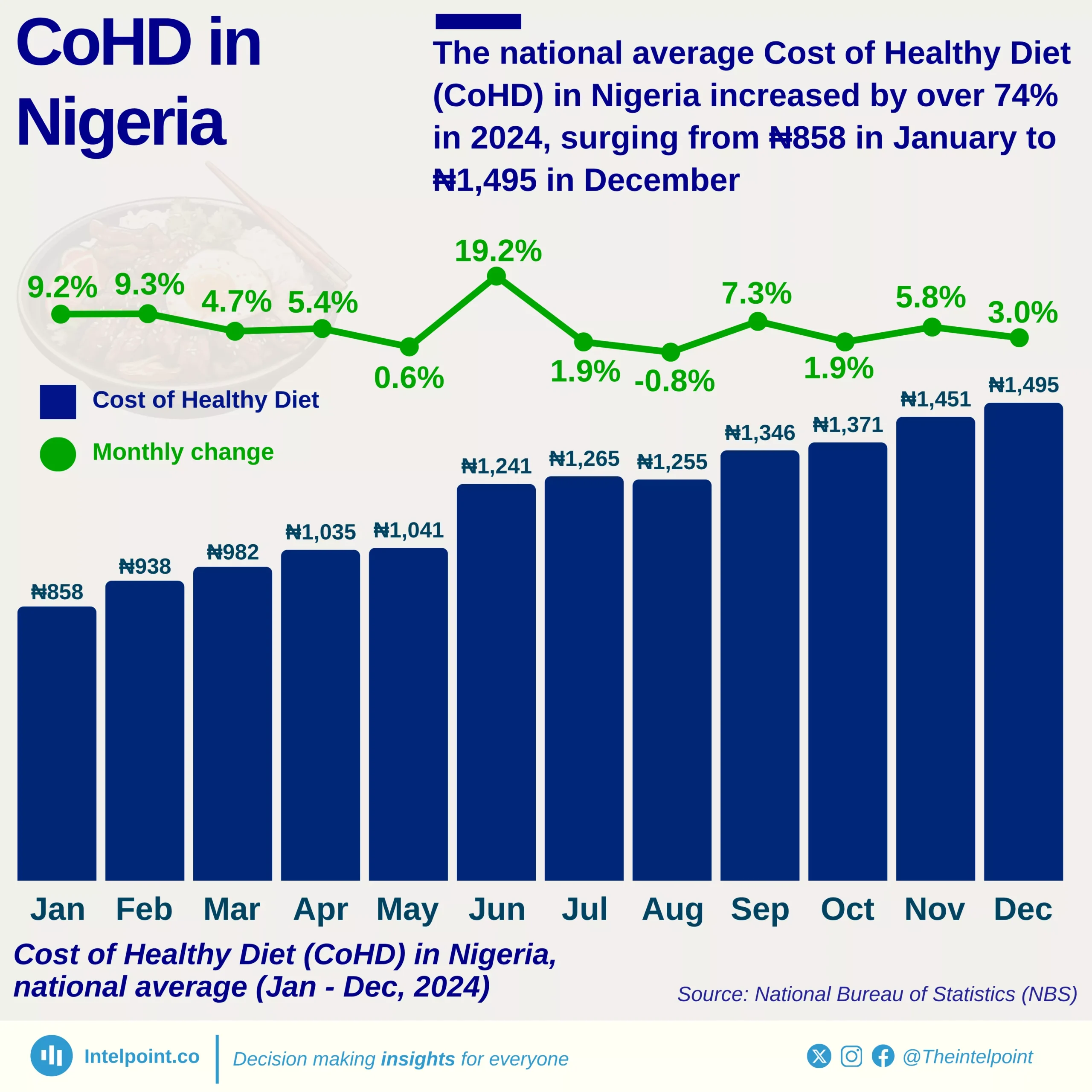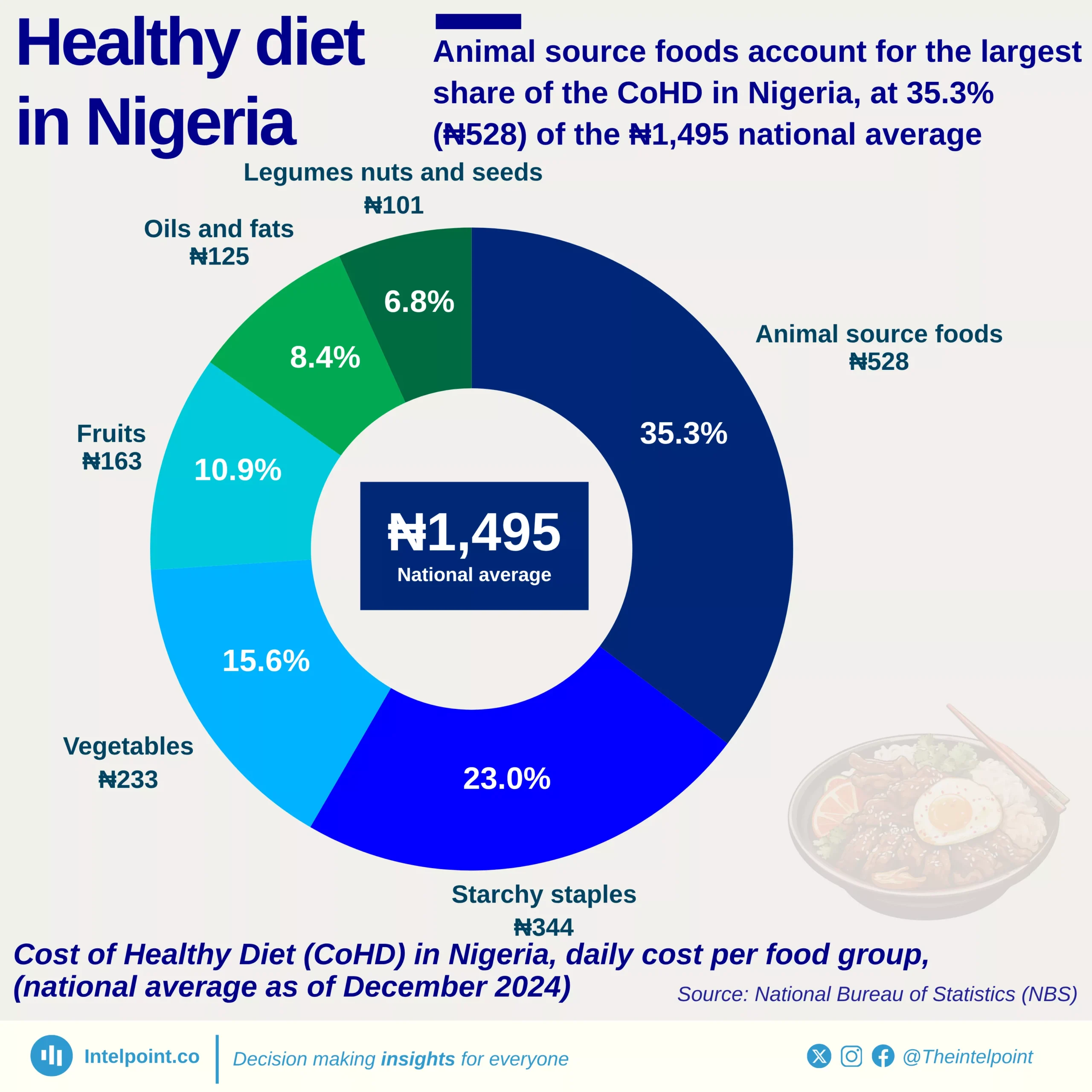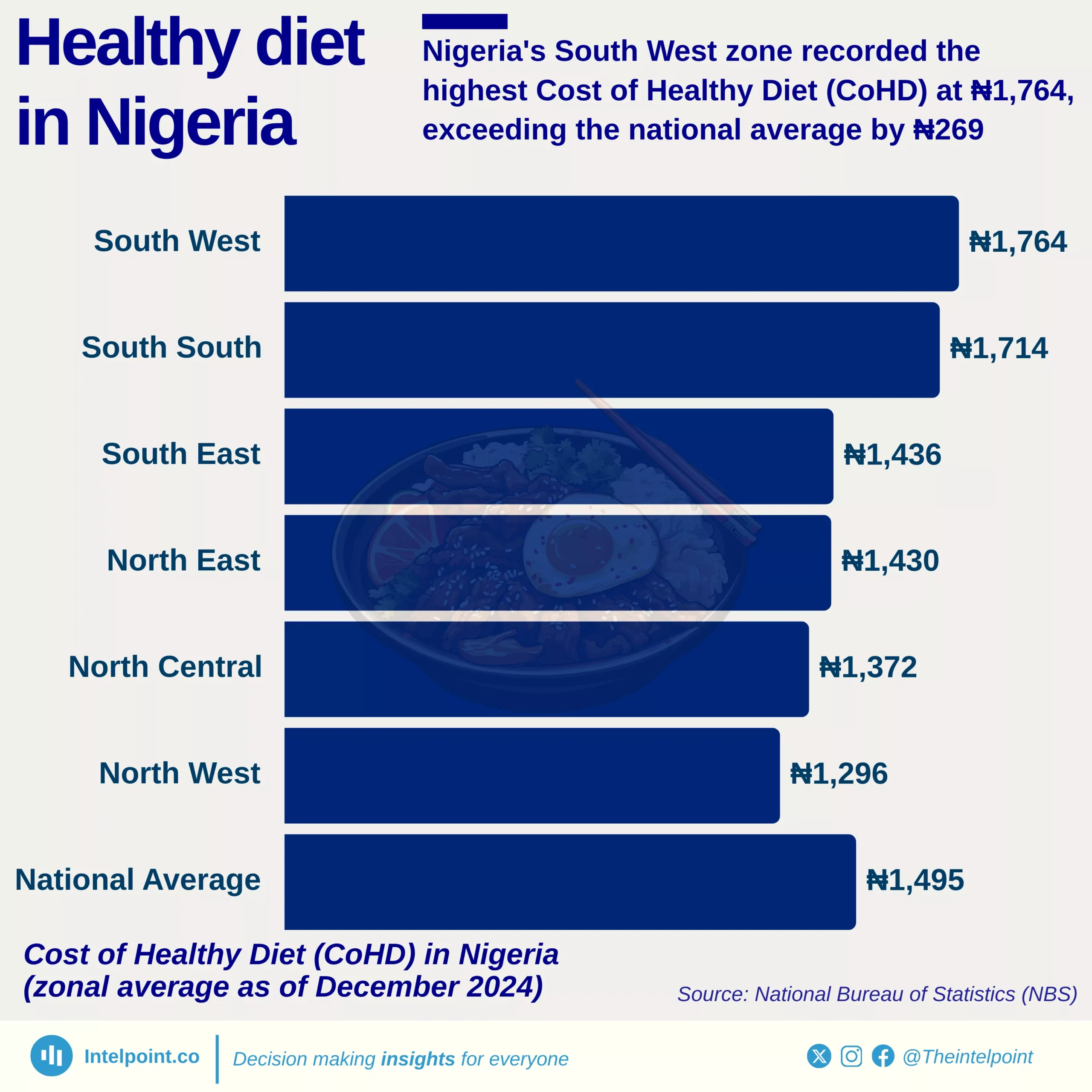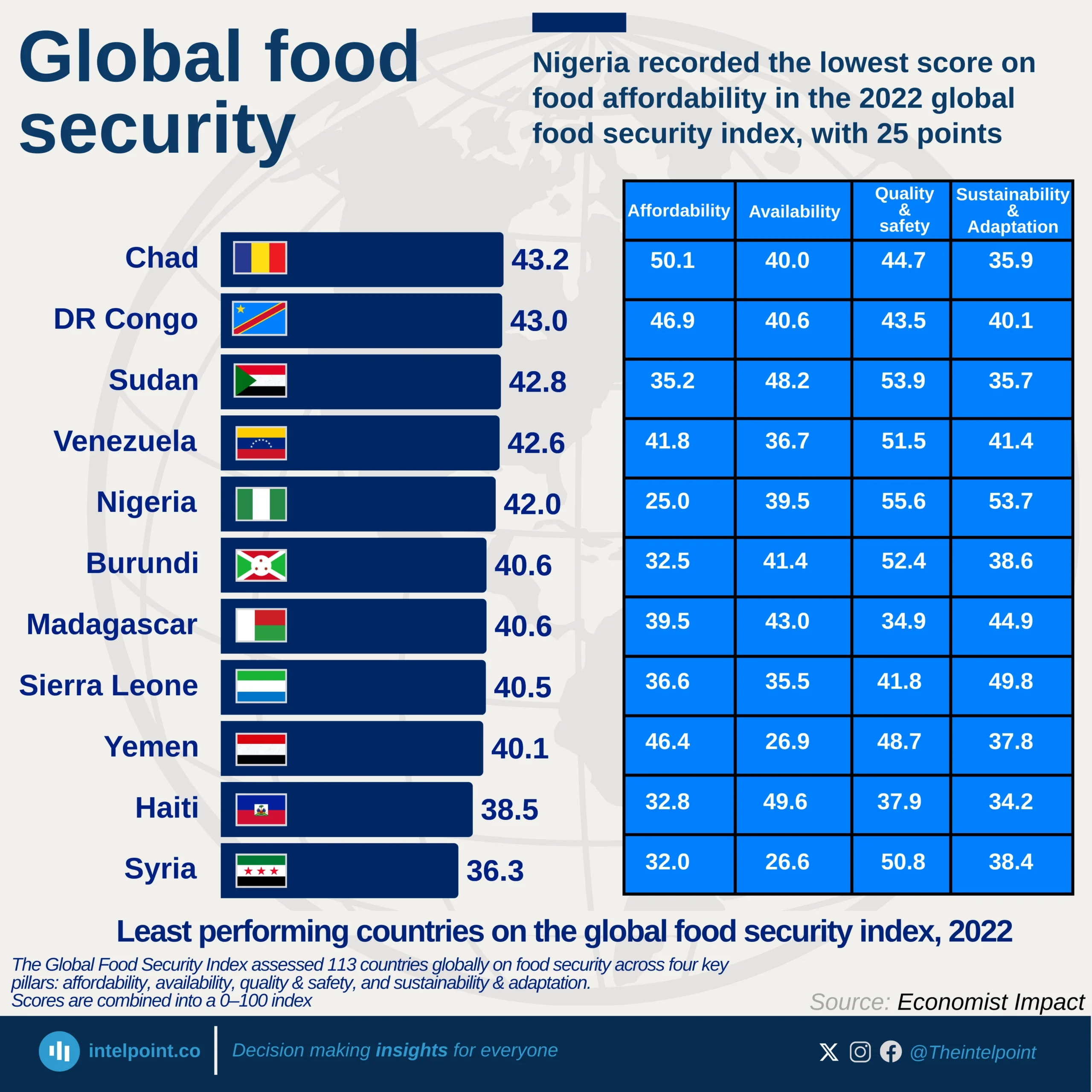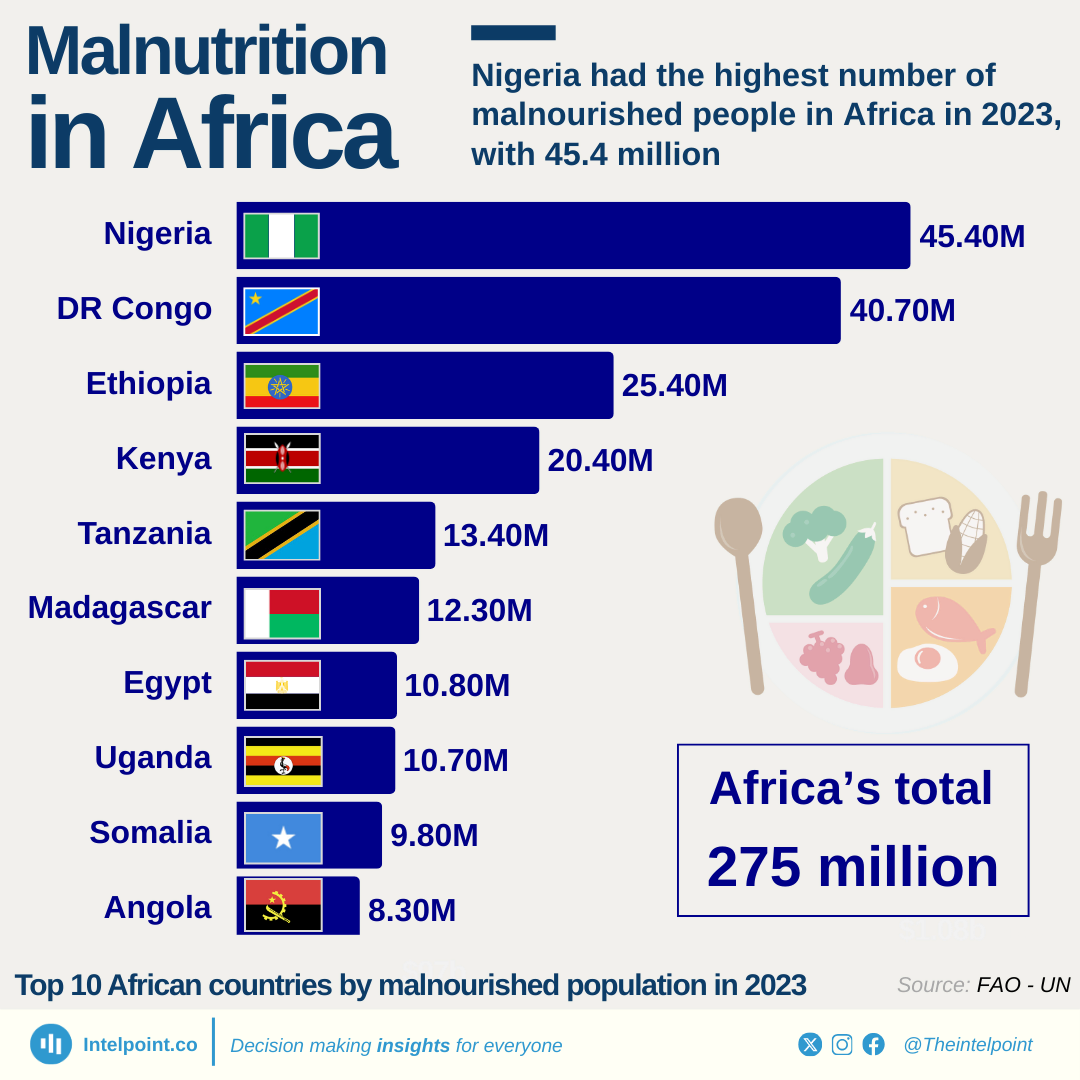The cost of maintaining a healthy diet varies significantly across Nigeria, revealing a stark regional divide in food affordability. Osun State recorded the highest Cost of Healthy Diet (CoHD) at ₦1,867, while Kaduna State, with ₦1,227, had the lowest — a difference of ₦640. This gap highlights how geography and local food market dynamics are shaping access to nutritious meals across the country. The national average stood at ₦1,495 as of December 2024, indicating that several states, especially in the southern regions, are well above the average.

